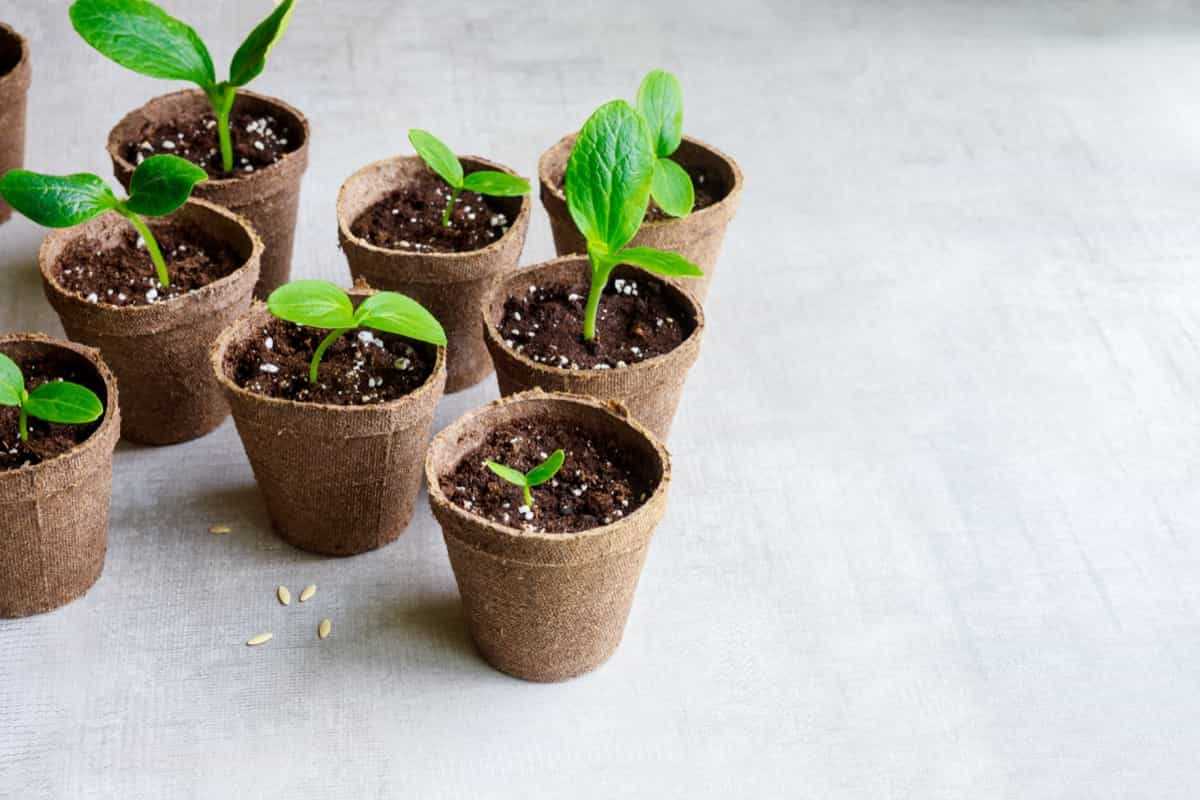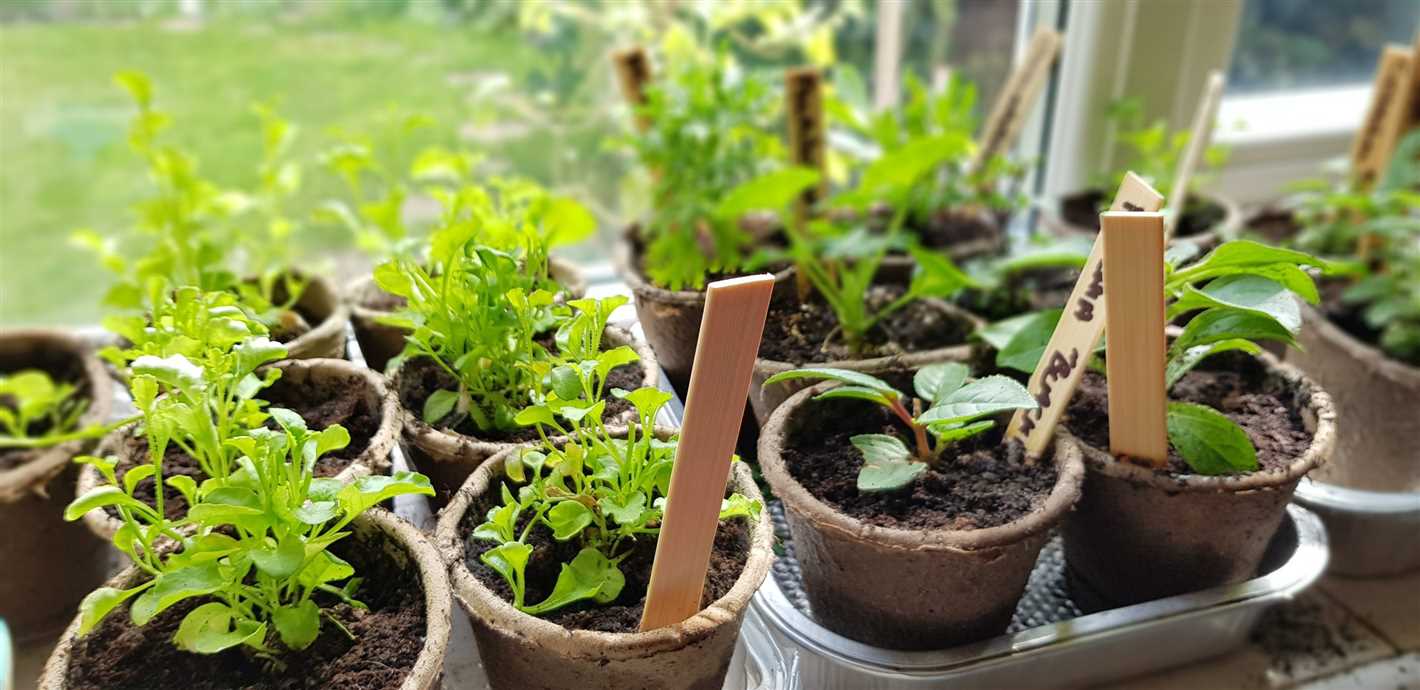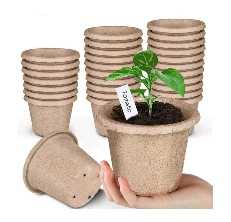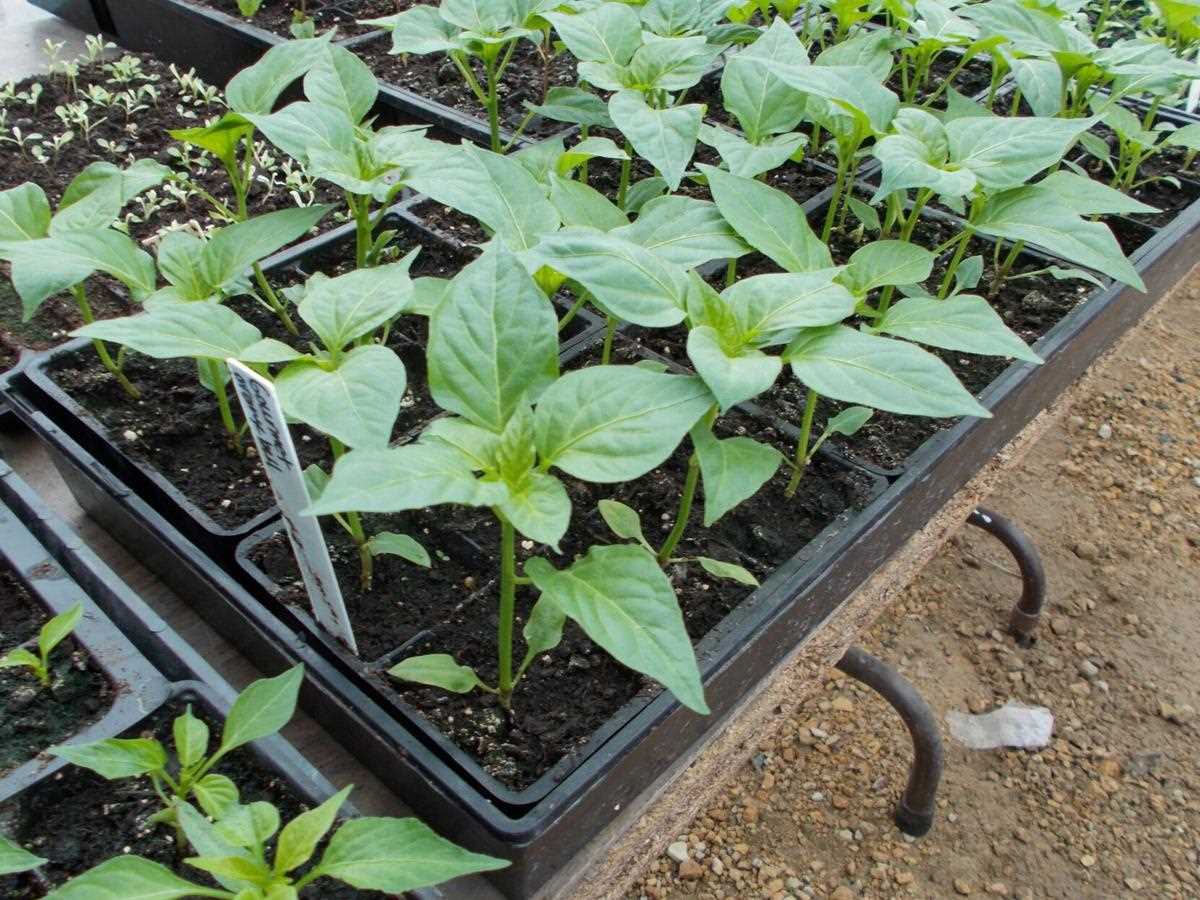- Why the choice of pot is important for seedlings
- 1. Affects root development
- 2. Controls moisture and drainage
- 3. Reduces transplant shock
- 4. Eco-friendly option
- 5. Cost-effective solution
- Factors to consider
- Benefits of using peat pots for seedlings
- Advantages of plastic pots for seedlings
- Comparison between peat and plastic pots
- Peat Pots
- Plastic Pots
- Conclusion
- Environmental Impact of Peat Pots
- Peat Sourcing and Production
- Disposal of Peat Pots
- Alternatives to Peat Pots
- Durability and cost of plastic pots
- Choosing the best pot for seedlings: a personal decision
- Advantages of peat pots
- Advantages of plastic pots
- “Question-Answer”
- What are the advantages of using peat pots for seedlings?
- Can plastic pots be used for seedlings?
- Are there any environmental concerns with using peat pots?
- What size pot should I use for seedlings?
- Can I use homemade containers for seedlings?
- What are some other options for seedling pots besides peat and plastic?
- Can I reuse peat pots?
- “Video” Best Seedling Trays: Soil Blocks, Winstrip, and Plug Trays Compared
When it comes to starting seedlings, choosing the right pot is crucial for their successful growth and development. Two popular options available in the market are peat pots and plastic pots. Each option has its own advantages and disadvantages, and it’s important to consider these factors before making a decision.
Peat pots, also known as biodegradable pots, are made from compressed peat moss. They are known for their ability to promote root growth and allow for easy transplanting. Peat pots are biodegradable, which means that they can be planted directly into the soil without disturbing the roots of the seedlings. They provide excellent aeration and drainage, preventing the roots from becoming waterlogged. However, peat pots can dry out quickly and may require frequent watering, especially in a dry environment.
On the other hand, plastic pots are durable and reusable. They are available in various sizes and shapes, providing flexibility in choosing the right pot for each seedling. Plastic pots retain moisture better than peat pots, reducing the need for frequent watering. They also provide good insulation, protecting the roots from extreme temperatures. However, plastic pots are not biodegradable and may contribute to plastic waste if not properly disposed of. Moreover, seedlings grown in plastic pots may need to be transplanted carefully to avoid disturbing the root system.
In conclusion, the choice between peat pots and plastic pots depends on various factors, such as your gardening preferences, environmental impact, and the specific needs of your seedlings. Both options have their own pros and cons, so it’s essential to consider these factors and make an informed decision. Ultimately, the best pot for your seedlings will be the one that promotes healthy growth and is aligned with your gardening goals and practices.
Why the choice of pot is important for seedlings
Growing healthy and strong seedlings is crucial for the success of your garden. One factor that plays a significant role in the development of seedlings is the choice of pot. The type of pot you choose can have a direct impact on the growth and overall health of your plants. Let’s explore why the choice of pot is so important for seedlings.
1. Affects root development

The pot you select for your seedlings can greatly affect their root development. Plastic pots, for example, have smooth sides that can encourage circling of the roots, leading to a phenomenon known as root binding. On the other hand, peat pots have porous sides that allow the roots to penetrate through, promoting better root structure and preventing root binding.
2. Controls moisture and drainage

Proper moisture and drainage are essential for the health of seedlings. Plastic pots tend to retain more moisture, which can lead to overwatering and create a favorable environment for fungal diseases. Peat pots, on the other hand, provide better drainage, allowing excess water to escape and preventing waterlogged soil and root rot.
3. Reduces transplant shock
Transplanting seedlings from one pot to another or from a pot to the ground can cause stress to young plants, resulting in transplant shock. Peat pots offer an advantage in this regard as they can be planted directly into the ground without disturbing the roots. This minimizes transplant shock and allows for a smoother transition for the seedlings.
4. Eco-friendly option

Choosing the right pot not only benefits your seedlings but also the environment. Plastic pots are often non-biodegradable and can contribute to plastic waste. Peat pots, on the other hand, are made of organic materials and will naturally break down over time in the soil. For those concerned about sustainability, peat pots are a more eco-friendly option.
5. Cost-effective solution
When it comes to cost, peat pots can be a more economical choice in the long run. While plastic pots may initially be cheaper, peat pots can be planted directly into the ground, eliminating the need to purchase additional pots or containers for transplanting. This can save both time and money.
In conclusion, the choice of pot plays an important role in the growth and development of seedlings. Peat pots offer benefits such as better root development, improved moisture control, reduced transplant shock, eco-friendliness, and cost-effectiveness. Consider these factors when deciding which type of pot to use for your seedlings.
Factors to consider
- Moisture retention: Both peat and plastic pots have different moisture retention capabilities. Peat pots tend to retain moisture better and can prevent seedlings from drying out. Plastic pots, on the other hand, have better drainage and can prevent overwatering.
- Root development: Peat pots allow roots to grow through the pot wall, which can help promote stronger root development. Plastic pots, however, may cause the roots to circle around the inside of the pot, potentially leading to root-bound seedlings.
- Cost: Peat pots are usually more expensive than plastic pots. If you are working on a tight budget, plastic pots may be a more cost-effective option.
- Eco-friendliness: Peat pots are made from biodegradable materials and can be planted directly in the ground, reducing transplant shock for seedlings. Plastic pots, although reusable, are not environmentally friendly and can contribute to plastic waste.
- Availability: Plastic pots are widely available in various sizes and styles. Peat pots may be less common and may require a visit to a specialized garden store.
Consider these factors when choosing between peat and plastic pots for your seedlings. Each option has its own advantages and disadvantages, so choose the one that aligns best with your gardening goals and preferences.
Benefits of using peat pots for seedlings
Biodegradable: Peat pots are made from organic, biodegradable materials such as peat moss and wood fibers. This means that once the seedlings are ready to be transplanted, the pots can be planted directly into the soil without disturbing the delicate roots. The peat pots will break down over time, providing nutrients to the soil and reducing waste.
Air and Water Permeability: Peat pots offer excellent air and water permeability, allowing the roots of the seedlings to get the necessary oxygen and moisture. This helps in the development of a healthy root system, promoting stronger and faster growth.
Prevents Transplant Shock: When seedlings are transplanted, their delicate roots can be easily damaged. Peat pots alleviate this issue as they can be directly planted into the soil. This reduces the chances of transplant shock and promotes a smoother transition for the seedlings.
Promotes Transplant Success: The biodegradable nature of peat pots allows the roots of the seedlings to grow through the walls of the pot. This “air-pruning” process encourages the development of a dense, fibrous root system. When transplanted, the seedlings have a higher chance of survival and establishment due to their well-developed root system.
Convenience and Time-saver: Using peat pots eliminates the need for manual transplanting, saving time and effort. Once the seedlings are ready for transplanting, simply place the entire peat pot into the soil. This convenience makes them a popular choice among gardeners and commercial nurseries.
Advantages of plastic pots for seedlings
- 1. Durability: Plastic pots are more durable compared to peat pots. They can be reused for multiple growing seasons, making them a cost-effective option for gardeners.
- 2. Better moisture retention: Plastic pots are designed to retain moisture better than peat pots, which can help to prevent seedlings from drying out.
- 3. Improved root growth: The smooth surface of plastic pots allows for better root penetration and growth compared to peat pots, which can sometimes restrict root growth.
- 4. Easier transplanting: Plastic pots are generally easier to remove from the soil than peat pots. This makes transplanting seedlings into larger containers or the ground a simpler and less stressful process for the plants.
- 5. More insulation: Plastic pots provide better insulation for the roots of seedlings, protecting them from extreme temperature fluctuations. This is particularly beneficial in colder climates.
- 6. Less risk of mold or disease: Unlike peat pots, which can sometimes harbor mold or disease-causing organisms, plastic pots are less prone to these issues.
- 7. Variety of sizes and shapes: Plastic pots are available in a wide range of sizes and shapes, allowing gardeners to choose the most suitable option for their specific needs.
- 8. Easy to clean: Plastic pots are easy to clean and sanitize, reducing the risk of transmitting diseases between different batches of seedlings.
In summary, plastic pots offer several advantages for seedlings, including durability, better moisture retention, improved root growth, easier transplanting, insulation, reduced risk of mold or disease, variety of sizes and shapes, and ease of cleaning. These factors make plastic pots a popular choice among gardeners for starting and caring for seedlings.
Comparison between peat and plastic pots
When it comes to choosing the best pot for seedlings, two options that are commonly considered are peat pots and plastic pots. Both types of pots have their advantages and disadvantages, and understanding their differences can help you make an informed decision for your seedlings.
Peat Pots
- Peat pots are made from compressed peat moss, which is a natural and biodegradable material.
- These pots are porous and allow for good airflow and water drainage, promoting healthy root development.
- Peat pots can be directly planted into the ground without disturbing the roots, reducing transplant shock.
- They are lightweight and easy to handle, making them suitable for small seedlings.
- However, peat pots can dry out quickly and may require more frequent watering compared to plastic pots.
- They can also break down over time, especially if exposed to moisture, which may affect their structural integrity.
Plastic Pots
- Plastic pots are durable and long-lasting, making them suitable for reuse over multiple seasons.
- They retain moisture better than peat pots, reducing the frequency of watering.
- Plastic pots provide better insulation, protecting the seedlings from temperature fluctuations.
- These pots are available in a wide range of sizes and shapes, offering more options for seedling growth.
- However, plastic pots are not biodegradable and can contribute to plastic waste if not properly disposed of.
- They may also hold excess water, leading to waterlogged soil and potential root rot if overwatered.
Conclusion
Both peat pots and plastic pots have their merits and drawbacks, and the choice ultimately depends on your specific needs and preferences.
If you prioritize biodegradability and ease of planting, peat pots may be the better option.
On the other hand, if you value durability and the ability to reuse pots, plastic pots may be more suitable.
Consider the needs of your seedlings, your planting practices, and your environmental concerns when deciding between peat and plastic pots for your seedlings.
Environmental Impact of Peat Pots
When considering the environmental impact of using peat pots for seedlings, it is essential to examine the sourcing and production of peat as well as the disposal of these pots.
Peat Sourcing and Production
- Peat is a non-renewable resource that forms over thousands of years in wetland ecosystems called peatlands.
- Harvesting peat involves removing the top layer of vegetation and then mechanically dredging out the underlying peat.
- This process disrupts and destroys these unique and sensitive ecosystems, leading to the loss of biodiversity.
- In addition, peat harvesting releases significant amounts of carbon dioxide and other greenhouse gases into the atmosphere, contributing to climate change.
Disposal of Peat Pots
- After use, peat pots can be composted along with the seedlings, which is an environmentally friendly option.
- However, many gardeners tend to discard peat pots in their regular household waste, which leads to them ending up in landfills.
- Peat pots in landfills do not decompose efficiently due to the lack of oxygen, resulting in the slow degradation of these pots over many years.
- Moreover, the degradation process produces methane, a potent greenhouse gas that contributes to climate change.
Alternatives to Peat Pots
Due to the environmental concerns associated with peat pots, it is advisable to consider alternative options. Some alternatives include:
- Plastic pots made from recycled materials
- Biodegradable pots made from natural materials such as coconut coir, rice hulls, or wood pulp
- Recycled paper pots or newspaper pots
By choosing these alternatives, gardeners can reduce their environmental impact and contribute towards more sustainable gardening practices.
Durability and cost of plastic pots
When it comes to durability, plastic pots have a clear advantage over peat pots. Plastic is a sturdy and long-lasting material that can withstand a variety of environmental conditions. Unlike peat pots, which can quickly deteriorate and break down over time, plastic pots can be reused multiple times without losing their shape or structural integrity.
Not only are plastic pots more durable, but they also tend to be more cost-effective in the long run. While they might have a higher upfront cost compared to peat pots, their ability to be reused makes them a more cost-efficient option over time. Investing in a set of plastic pots can save you money in the long term, especially if you plan on growing seedlings year after year.
Additionally, plastic pots are generally more affordable compared to other types of containers such as ceramic or terracotta pots. This makes them a popular choice among gardeners who want an economical option for starting their seedlings.
However, it is important to note that not all plastic pots are created equal. When choosing plastic pots for your seedlings, opt for ones that are made from high-quality plastic. Cheaper, low-quality plastic pots may be more prone to cracking or breaking, which can defeat the purpose of their durability. Look for pots that are labeled as durable, UV-resistant, and made from recycled materials for a more eco-friendly option.
- Plastic pots are more durable than peat pots and can be reused multiple times without deteriorating.
- They are a cost-effective option in the long run, especially if you plan on growing seedlings year after year.
- Plastic pots are generally more affordable compared to other types of containers.
- Choose high-quality plastic pots that are labeled as durable, UV-resistant, and made from recycled materials for the best durability.
Choosing the best pot for seedlings: a personal decision
When it comes to growing seedlings, one of the key decisions to make is which type of pot to use. Many gardeners debate between peat pots and plastic pots, both of which have their own advantages and disadvantages. Ultimately, the choice between them is a personal decision that depends on your specific needs and preferences.
Advantages of peat pots

- Peat pots are made from organic materials, such as peat moss and wood pulp, making them biodegradable and eco-friendly.
- They allow for easy transplanting, as the entire pot can be planted directly into the soil without disturbing the delicate roots of the seedling.
- Peat pots provide good drainage and aeration, promoting healthy root growth.
- They are suitable for seedlings that have sensitive root systems, as the pots gradually break down and allow the roots to grow freely.
Advantages of plastic pots
- Plastic pots are durable and long-lasting, allowing for reuse over multiple growing seasons.
- They retain moisture better than peat pots, which can be beneficial for seedlings that require consistent moisture levels.
- Plastic pots come in a variety of sizes and shapes, providing flexibility in accommodating different types of seedlings.
- They are generally less expensive than peat pots, making them a cost-effective option for gardeners on a budget.
In addition to these advantages, there are also a few considerations to keep in mind when choosing between peat pots and plastic pots. Peat pots may dry out more quickly than plastic pots, requiring more frequent watering. On the other hand, plastic pots can retain excess moisture, increasing the risk of overwatering. It’s important to find a balance and monitor the moisture levels regularly.
Ultimately, the best pot for seedlings is the one that suits your specific needs and preferences. Some gardeners prefer the sustainability of peat pots and don’t mind the extra cost, while others prioritize durability and affordability, opting for plastic pots. Consider factors such as the type of plants you’re growing, your gardening style, and your budget to make an informed decision.
Whichever option you choose, providing proper care and attention to your seedlings will ensure their healthy growth and successful transplanting into the garden.
“Question-Answer”
What are the advantages of using peat pots for seedlings?
Using peat pots for seedlings has several advantages. First, peat pots are biodegradable, which means they can be planted directly into the ground without disturbing the roots of the plants. Second, peat pots allow for easy root penetration, as the pots naturally break down over time. Third, peat pots provide good drainage and aeration for seedlings, preventing waterlogged soil and root rot.
Can plastic pots be used for seedlings?
Yes, plastic pots can be used for seedlings. Plastic pots are durable and reusable, making them a cost-effective option in the long run. They also provide better moisture retention compared to peat pots, which can be beneficial in certain growing conditions. However, plastic pots do not allow for root penetration like peat pots, so seedlings may need to be transplanted into larger containers sooner.
Are there any environmental concerns with using peat pots?
While peat pots are biodegradable and made from a renewable resource, there are some environmental concerns to consider. Peat moss, which is used to make peat pots, is often harvested from peat bogs, which are fragile ecosystems that take thousands of years to form. Unsustainable peat harvesting can damage these habitats and release large amounts of carbon dioxide into the atmosphere. Therefore, it is important to choose peat pots from sustainable sources or explore alternative options, such as coir pots made from coconut husks.
What size pot should I use for seedlings?
The size of the pot you should use for seedlings depends on the specific plants you are growing. In general, smaller seedlings can be started in small pots, such as cell trays or peat pellets. As the seedlings grow and develop a stronger root system, they will need to be transplanted into larger pots. This is important to allow for proper root development and prevent the plants from becoming root-bound. A good rule of thumb is to choose a pot that is about twice the size of the current root system.
Can I use homemade containers for seedlings?
Yes, you can use homemade containers for seedlings. Many household items can be repurposed as seedling pots, such as yogurt cups, egg cartons, or newspaper pots. When using homemade containers, it is important to ensure they have proper drainage holes to prevent waterlogged soil. Additionally, make sure to sterilize the containers before use to prevent the spread of diseases or pests to the seedlings.
What are some other options for seedling pots besides peat and plastic?
There are several alternative options for seedling pots besides peat and plastic. Coir pots, for example, are made from coconut husks and offer similar benefits to peat pots, such as biodegradability and good drainage. Other options include compressed soil pots, which are made from compressed peat or coco coir and can be planted directly into the ground, and fabric pots, which provide excellent drainage and aeration for seedlings.
Can I reuse peat pots?
While peat pots can be reused, they are more prone to breaking down with each use. If you decide to reuse peat pots, make sure to thoroughly clean and sterilize them after each use to prevent the spread of diseases or pests. Additionally, consider using larger pots for seedlings that may be transplanted multiple times, as they will hold up better over time.







